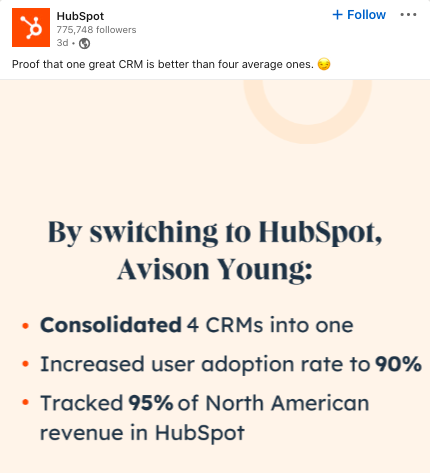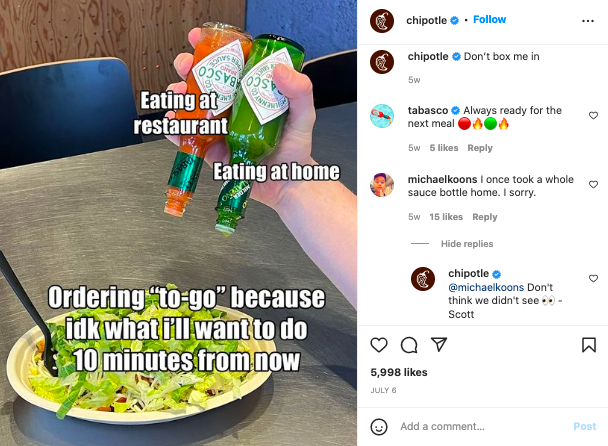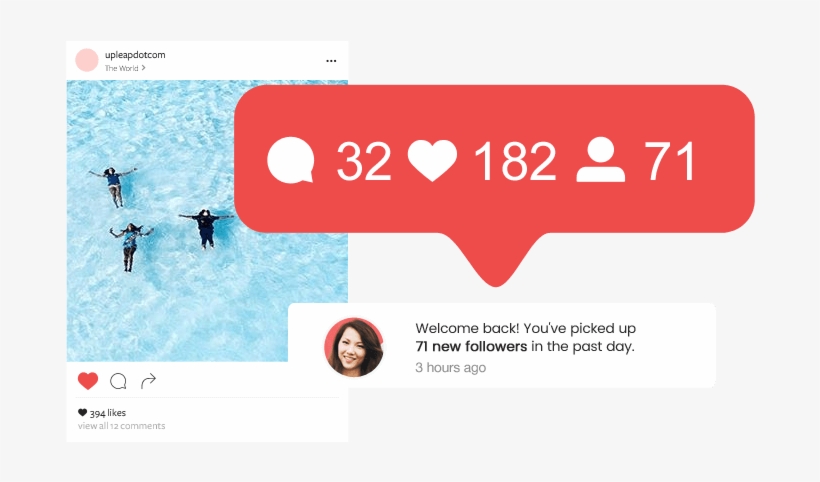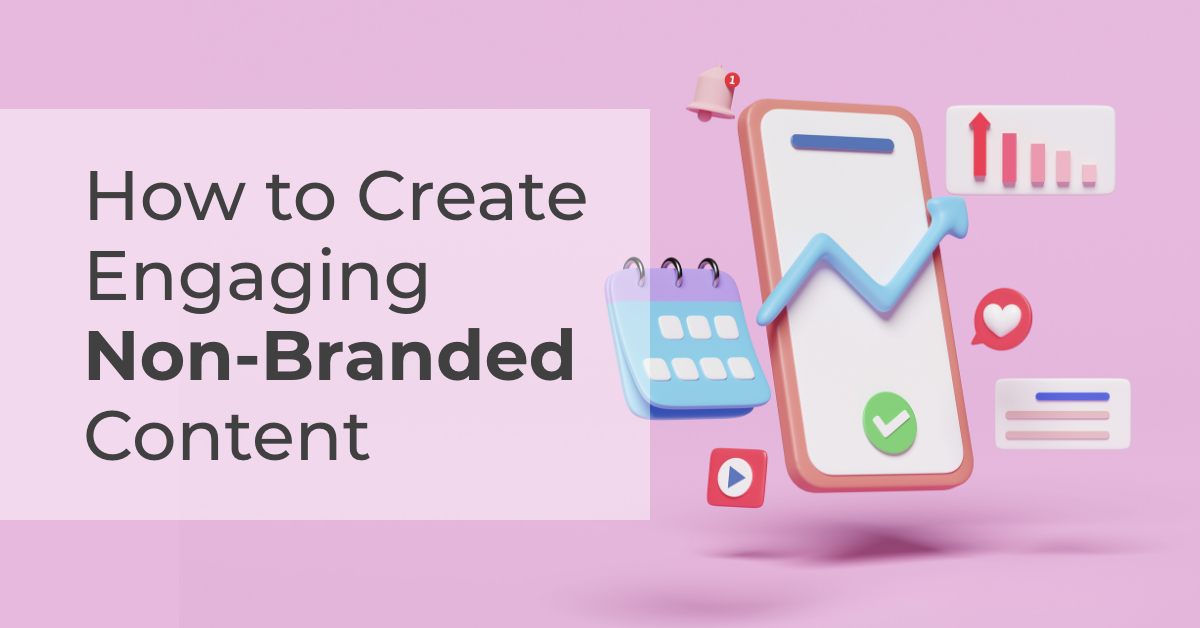Social media is a great place to generate leads and increase revenue — it’s also a way to build your company’s identity and increase brand awareness. Many companies use social media to promote their products and services by sharing branded content. However, there is value in posting content that doesn’t directly mention your company or its product and services. Non-branded content relates to your target audience and builds long-lasting relationships with your social media followers.
Branded vs. Non-branded content
First, to understand why non-branded social media posts are valuable, let’s take a look at the differences between branded and non-branded content. Be sure to check out the examples below!
Branded Content
Branded content draws a link back to the company in some way. These posts aim to show consumers how they can benefit from purchasing from a company or outlines a problem that its product or service can fix. This type of content is meant to drive leads, increase sales, drive website traffic, and support other business-oriented goals.
Here are some examples of branded content almost any company can produce on social media:
Product demonstrations
This is effective for showing your products in action. Customers like to have a full understanding of how things work before they purchase. This can even be a simple post with the product and its functionality.
The new MacBook Air. Supercharged by M2. With an impossibly thin design. All-day battery life*. And a stunning 13.6” Liquid Retina display. Don’t take it lightly. Coming next month. *Battery life varies by use.
— Apple (@Apple) June 6, 2022
Customer Testimonials
Show off your best reviews! You may have some testimonials on your website, but reviews could also be found on social media, such as a positive Tweet that you want to retweet on your company’s page. User-generated reviews build credibility and trust among a company’s followers. The posts could even showcase customers using a product.
Case Studies
Case studies showcase a company’s strengths and how they have brought value to a customer. Case studies can be posted on social media by writing a summary of the work completed or a post linking to your company’s website. Whatever way you share it, including impressive statistics and results helps to strengthen your credibility.

[Source]
Influencer Marketing
Influencer marketing is one way to promote your business to new audiences. Influencers are a popular advertising tool that many businesses across different industries are leveraging in order to reach a specific audience. Micro-influencers are creators with a social media presence that is smaller than a celebrity but bigger than the average user. Generally, they have between 1000 and 100,000 followers. They are an effective way to reach an audience of followers with common interests. Compared to more famous influencers with millions of followers, micro-influencers can be the most cost-effective solution if you’re targeting a niche audience.
Non-branded Content
Non-branded content creates a community of followers with common interests who look forward to new posts. A brand can do this by sharing content that tangentially relates to its products or services.
Before we explain why including non-branded content is an effective strategy, let’s look at some examples:
Trending Topics
Trending topics can include anything that’s being talked about in the news or on Twitter. It could be sports, movies, a TikTok trend, or a social media challenge. Using relevant hashtags and keywords can excel your posts to the top of a trending page. One of the most common ways we see companies tap into trending topics is by leveraging special holidays, such as Earth Day, or mentioning holidays that relate to the company’s industry.

[Source]
Polls and Q&As
Asking a question is an easy and straightforward way to increase engagement. Users want to share their own thoughts and be heard. Instagram Stories is a great way to encourage followers to ask questions or participate in a sticker poll. Even a business-oriented platform like LinkedIn offers ways to increase engagement through interactive features like polls.
Memes and Lighthearted Posts
Make your followers laugh! Posting a simple joke or something lighthearted related to your industry can create a more authentic online persona. It can also help customers remember your brand because they tend to stay in their minds more than an advertisement.

[Source]
Educational Content
Educational content does not need to directly mention a specific product or services. Instead, your company can post educational content that relates to related industries. For example, Slynd® sells birth control pills, and its Instagram account posts about women’s health and other topics this particular audience may be interested in. This builds trust with the audience because they are showing a true understanding of what women may be looking for on social media.
Why it’s Beneficial to Share Engaging Non-Branded Content
Now that we’ve explained the differences between branded and non-branded posts, the big question is why bother including non-branded posts at all? These types of posts don’t necessarily drive social media users to your website or lead to sales. So, what’s the point?
It’s simple. Non-branded content is meant to create long-lasting relationships with customers and followers on social media. They will have more reasons to follow your account rather than just for your products. The bottom line on social media is that users want to be entertained and they place more value on content that resonates with them. If your brand actively produces content that meets users’ interests, they will remember your account, purpose, and products.

[Source]
Non-branded content is effective at creating a persona that is similar to your company’s target audience. By sharing content about trending sports topics, for example, the brand is positioning itself as understanding the interests of its audience they’ve identified as sports-loving Gen Z’ers who use social media to keep up with the latest sports trends.
Being relatable develops credibility and trust. You can’t sell a product without understanding your audience, but that understanding also needs to be shown in a visible way. Prove to your customers that you relate to them and understand their needs.
And lastly, engaging non-branded content builds awareness and your online presence. An account that has lots of high-quality branded content but no likes or comments will not have the same level of credibility as an account that rarely posts branded content but has a lot of engagement across its non-branded posts.
People use social media to connect, catch up on the latest trends, and look at engaging and entertaining content. Once you start your social media strategy with that in mind, it’s easy to understand why your social media feed should include non-branded posts as well!
Need help creating a social media strategy that incorporates both promotional and engaging content like Slynd®? Our marketing experts can help! Set up a conversation today or check out our Instagram for more insights!
href="#" data-color-override="false" data-hover-color-override="false" data-hover-text-color-override="#fff">Book a 30-minute consultation today!


